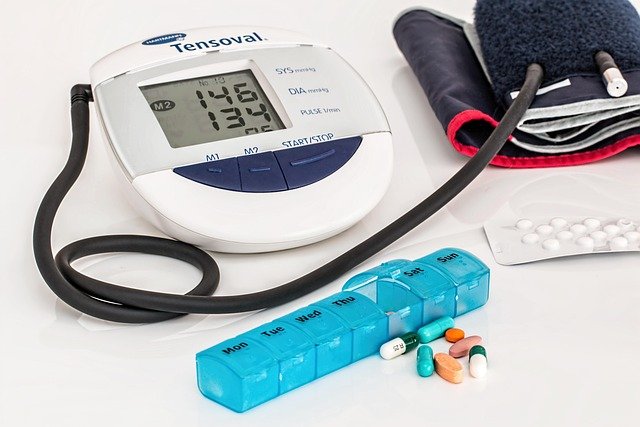Hormone Replacement Therapy for Women: Uses, Benefits, Risks
Hormone replacement therapy (HRT) refers to medical treatments that restore or replace hormones that decline with age or illness. For many women, HRT addresses symptoms associated with menopause, surgical oophorectomy, or other hormonal imbalances. This article explains what HRT is, how it works, potential health effects, and important considerations for therapy choices and monitoring.

What are hormones and how do they work?
Hormones are chemical messengers produced by glands such as the ovaries, thyroid, and adrenal glands. They travel through the bloodstream to regulate processes like metabolism, mood, reproductive function, bone density, and temperature control. In women, oestrogen and progesterone play key roles in the menstrual cycle and reproductive health; their decline during menopause produces many of the symptoms targeted by hormone therapy. Understanding the specific hormones involved helps shape safe and effective treatment plans.
Hormone balance is dynamic: levels change with age, illness, medications, and lifestyle. Measuring hormone levels and reviewing symptoms helps clinicians determine whether replacement or alternative therapies are appropriate. Hormone testing can inform but does not replace clinical judgment about symptom pattern, risks, and personal health history.
What is hormone therapy and common approaches?
Hormone therapy describes a range of preparations and delivery methods designed to replace or supplement hormones. Common approaches for women include oestrogen-only therapy (usually for women without a uterus), combined oestrogen-progestogen therapy (to protect the uterine lining), and localized vaginal oestrogens for genitourinary symptoms. Delivery methods include oral pills, transdermal patches, gels, vaginal rings, and implants. Some providers discuss “bioidentical” hormones—compounded or commercially available formulations with molecules structurally similar to human hormones—though evidence and regulation vary.
Choice of preparation and route depends on symptoms, personal risk factors, convenience, and cost. Transdermal oestrogen may have different risk profiles for clotting than oral forms. Vaginal formulations provide targeted relief of dryness or urinary symptoms with lower systemic exposure. A clinician will weigh benefits and risks when recommending a therapy plan.
How does HRT affect women’s health?
HRT can significantly reduce vasomotor symptoms (hot flashes, night sweats), improve sleep and mood for some women, and relieve vaginal dryness and painful intercourse. It also has documented effects on bone health: oestrogen therapy can slow bone loss and reduce fracture risk in appropriate patients. For cognitive health and long-term cardiovascular outcomes, evidence is complex and varies by age at initiation and underlying health.
The impact on overall health depends on timing, dose, and individual risks. Starting HRT closer to the onset of menopause is associated with different risk–benefit profiles than starting later in life. Regular monitoring, screening (for example, mammography), and reassessment of therapy over time are standard components of safe management.
What role does HRT play in menopause?
Menopause is defined as the end of menstrual periods and a decline in ovarian hormone production. HRT is one of the main medical treatments for menopausal symptoms, particularly vasomotor symptoms and genitourinary syndrome of menopause. Short-to-medium term HRT can offer substantial symptom relief that improves quality of life for many women experiencing moderate to severe symptoms.
Decisions about HRT during menopause consider symptom severity, age, time since menopause, and personal or family medical history. Non-hormonal options such as certain antidepressants, gabapentin, lifestyle adjustments, and vaginal moisturizers may be suitable for some women or used in combination with local hormone therapy. A tailored approach helps balance symptom control with safety considerations.
What are risks, side effects, and considerations?
Potential side effects of hormone therapy include breast tenderness, bloating, mood changes, and spotting. More serious risks sometimes associated with HRT in clinical studies include an increased risk of venous thromboembolism (blood clots), stroke, and, in specific contexts, breast cancer. Absolute risks vary by age, baseline health, type of hormone used, dose, and route of administration. For example, transdermal oestrogen may pose a lower clotting risk than oral formulations in some studies.
Because risks differ between individuals, clinicians typically individualize treatment: lowest effective dose for the shortest duration consistent with treatment goals, reassessing annually or sooner. Women with certain histories—such as active breast cancer, unexplained vaginal bleeding, or recent thromboembolic events—may be advised against systemic HRT. Shared decision-making and regular review help align therapy with evolving health status.
This article is for informational purposes only and should not be considered medical advice. Please consult a qualified healthcare professional for personalized guidance and treatment.
Conclusion
Hormone replacement therapy can provide meaningful symptom relief and health benefits for many women, particularly around menopause, but it requires careful consideration of individual risks and goals. Treatment options and delivery methods are varied, and decisions are best made in partnership with a knowledgeable clinician who can tailor therapy, monitor outcomes, and adjust plans over time.




